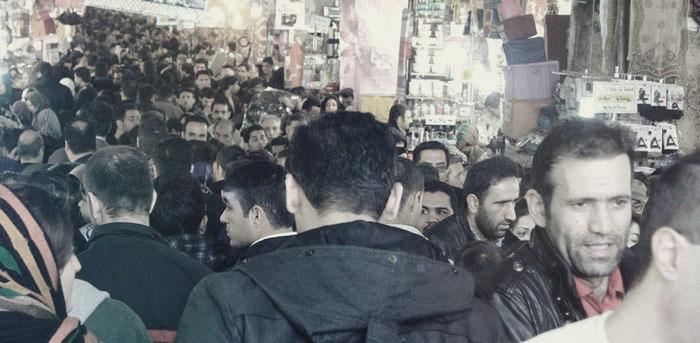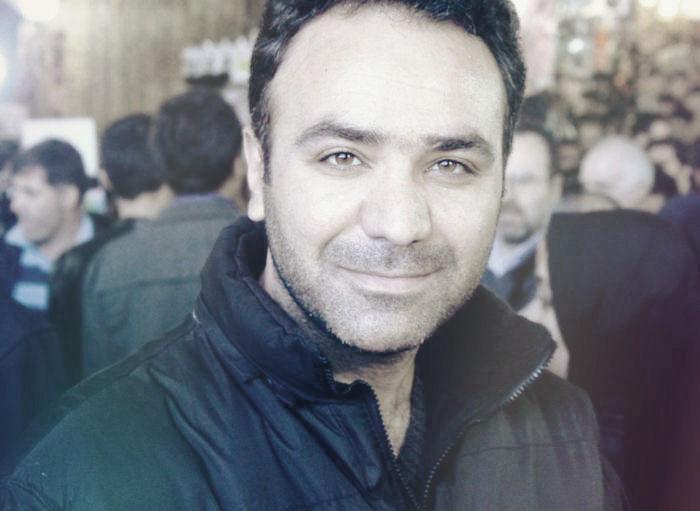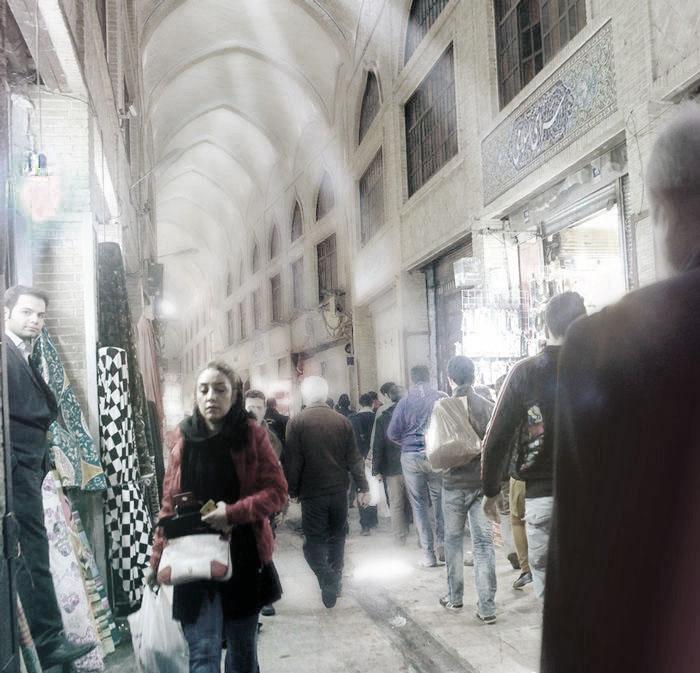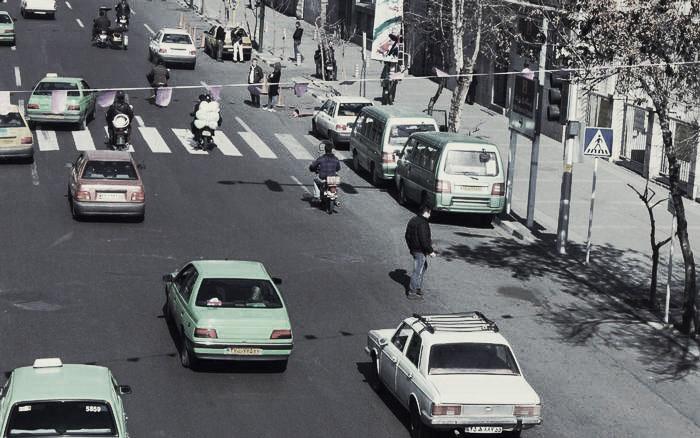[ID:883] Sketches of Hasan’s MomIran, Islamic Republic of “ONE IS NEVER SICK, if he is not weak.” So wrote Avicenna, the far-famed Persian doctor and philosopher. What did he mean by this? Was he blind to accidents of life and dire luck? Was he so taken with perfection myths that he could not mind health of mass society? Was he a maniac?
Maybe he was. But I suppose he understood health different from the way we do. Avicenna and our forebears, by and large, did not believe they could achieve health through medication, or prayer, or alternative medications. They considered achieving health as yet an irrelevant idea; health was not to achieve. They saw it as a shadow, a fruit, a byproduct of the life one lives. That is, they considered unfit behaviors grounds of every disease. Iranian traditional medicine, rooted in Greek humorism, diagnosed each illness to be either a getting heated or a getting chilly. Acting over human endurance ignites a getting heated, and being under human limits leads to a getting chilly. To be healthy again, behaviors of one have to be treated.
Majority of people do not reject healthiness. Thus our forebears deduced that choice does not drive unhealthy lifestyles; an autonomous consciousness or a sensibility does. Everyday experiences formulate this sensibility without our knowing it. In one sense, we are mirrors reflecting our experiences, whether healthy or not. Experiences are not separate from circumstances; they are not separate from surrounding. Saw life in this light, people of healthier centuries could ask of architects and builders vital questions about their health, because architecture takes part in most of our experiences and circumstances.
I think over their answers as I walk through the grand bazaar, an illustration of their creation. It was once an integrating spine, a support, connecting gates of the old city. For all her uncontrolled growth, Tehran has crawled out of it. Its many rows had been connecting major buildings, from mosques and baths to caravanserais and state establishments, each strengthening and making it more complex. Bazaar was heart of the social city, a place for not only commerce but also ceremony, socialization and recreation.
Walking through the bazaar, one might be reminded of Ali Hatami’s 1969 musical classic, Hassan Kachal, if he has watched the movie. It is based upon a famous story from Iranian oral tradition, a myth of bazaar, one that Iranian kids grow up listening. And I believe it shows the solutions of bazaar to health-related questions. The story begins as all Persian stories do: “Yeki Bood Yeki Nabood” (in a time when some were and some were not) lived Hassan Kachal (literally: bald-Hassan). Hassan was a bareheaded, sluggish fellow who, out of comfortable idleness, never walked and never left home. His mother did everything to put him up to his feet. One morning, knowing how badly he likes apples, the mom sets a decoying apple trail, starting from Hassan’s bed. Hassan rose to the bait. Eating apples one by one and following the trail led him out of the house and into the bazaar, where his mother locked him out. Dazzled at first, but then marveled by the bazaar, he ventured into life to face his destiny and his bliss, and that made him hero of the grand bazaar. [1]
The moral of the story is to prefer proactivity to idleness, but in an odd way. The way to this proactivity is not will or wisdom or justice, but changing the surrounding, changing containers of one. As the story tells us, our containers shape our behaviors, or if you will, we identify with our containers. It is the only way that we can garner a sense of security and protection from a bigger being. Without containers, we feel naked, ashamed and alarmed. Besides, our behaviors in a container are like solving jigsaw puzzles: we affirm its function for one more time. In a bed one becomes idle. In a path signified by apples–as stories of religion confirm too– one follows blindly. What does one do in bazaar?
I try to project journey of Hassan onto the remains of bazaar. Images from the movie lodge in my mind: passing caravans of farthest lands, marveling at architectural details and delicate penetration of light into space, watching barbers and blacksmiths at work, and dissolving into crowd. Then I see things take place. People are at work (no blacksmiths though). I break out of my shell and check them out. They are everyday people, but I am not used to their faces. In their faces is less stress and anxiety. They have forgotten their existence; bazaar has charmed them. They do not fear to answer your eyes. They are not ashamed.
An old woman is haggling over a mirror piece of furniture. Bazaar kids run across you and slow to respect a white-turbaned cleric. He is charmed too. In a street, he would have gazed at pavement. But here his train-like answering of salutations reminds you of an archaic yet familiar music. Kids start running again. You smile and discover that without your knowing, you became one with the bazaar: A frog among frogs, a fish among fish. You are not tired; you cannot get tired. Time is paused. Shopkeepers turning on lights remind you of it. You find sky through atrium of a caravanserai. It is getting dark.
"Are you making a point with this lot of human figures?" architecture professors often ask me so. I have a reputation. Once done, my sketches and drawings are overrun with human figures, and one has a hard time scrutinizing the structure and forms. If I am to answer, I give a lecture on "significance of anthropometrics in design," so to impress the professor. In truth, I do not care much for anthropometrics; I have no point to make. By looking closely at those drawings I can find in them, in a magical way, implicit memories from my bazaar childhood in Kerman. Thanks to her small and consistent growth, Kerman, the arid city of my upbringing, has preserved her bazaar as a core public place, an agora. There I took shape; there I first fell for the solid form of joy, for architecture.
In those drawings I sometimes see a familiar face, and I say to myself "déjà vu." I know why these images are remained with me after the years. We do not respond to people and stones alike. We are naturally, deeply interested in other people. Human beings are pre-wired for connection and understanding. Out of empathy, we receive a big chunk of information, a sensibility, deeper than any idea expressed in words or in architectural forms.
Bazaar worked so. People were literally a part of it, a part of its scheme. They walked in bazaar because they sensed to do so was the right behavior in this container, in this dress. Unlike us, builders of bazaar knew that architectural forms are not the best way to transfer a cue. They understood that the way to create a perception, the way to the collective sensibility, is through exemplifying the behavior. To inspire walking among natural idlers, they needed to design their decoy apple trails; they needed people to ignite this sensibility. For them who better than those who do it willingly; those who profit from doing it; who better than mercenaries?
Enmeshing the social city into the financial city is the ultimate secret to functionality of bazaar. This integrated, humane pattern of Iranian cities is a historical achievement of generations. History usually meets a level of sophistication that armchair designer helplessly stands in amazement. But if history has done it better, why bother at all? I struggle with this bleak thought as I leave the bazaar, and questions follow so. How did we lose the tradition? Was something wrong with it? Or did we rebel, for an appetite of a forbidden fruit? The furious answer scares me the moment I walk through the entrance to the modern Tehran. I am familiar with the answer. It has tried to kill me many times. The last time it confined me to bed for a month.
Cars are fast, powerful and perfect, and we are deeply imperfect. We sincerely need them. Because of our insecurity, we have withdrawn and abandoned our highways to them. We built our cities around them and placed ourselves in the corner, into sidewalks. Our streets are containers for machines. Acute spirits sensed that modern streets, being emulated around the world, are not human containers. Charles Baudelaire, the forward-looking French poet, called it “loss of a halo” (Perte d'auréole). It is in a prose poem in form of a dialog, between the poet and a citizen, in a disreputable place –maybe a brothel. The poet recounts his journey there: “Just now as I was crossing the boulevard in a great hurry, splashing through the mud in the midst of seething chaos, and with death galloping at me from every side, I gave a sudden start and my halo slipped off of my head and fell into the mire of the macadam. I was far too frightened to pick it up.” [2]
To me, a more interesting observation of this loss of halo, or container, comes from Le Corbusier, certainly the most influential architect of twentieth century. He tells how he felt the need to a new order in architecture, the modernism. He was walking the same Parisian streets. All of a sudden, he sensed a rush of anxiety as he saw the world is “gone mad” by the “fury of traffic and its everyday increasing agitation” and we are “driven out of the streets by it.” Le Corbusier found himself threatened and vulnerable: “To leave our house [means that] we have crossed our threshold.” He remembered days of his youth: “The roads belonged to us then; we sang in it, we argued in it, while the horse-bus slowly flowed softly by.” Still, Le Corbusier suggests that we should be “seized, filled with enthusiasm, with joy” because we are in the “midst of power, of strength;” because we control the cars. [3]
When Le Corbusier inspired modernism in architecture with his “house is a machine to live in,” he implicitly meant that street is a machine for traffic. We can settle in our houses and be joyous for our control, but how do we feel once we enter the streets? I look at the faces of the few pedestrians to find out, as I take the sidewalk of the first street where the bazaar meets the modern Tehran (Khordad 15th avenue). I cannot read joy: the way they avert their eyes –that somehow reminds me victims of racism; the way they hold up their noses as if they despise their own smell. They are ashamed.
Laozi, philosopher of ancient china said: “My house is not walls, not ceiling, and not floor, my house is the ‘nothing’ between these, because there is where I live.” In modern streets the “nothing” is diseased. It is a “nothing” for car, not for human. Without an apt “nothing”, without a life container, we are unprotected. We are awake to our nakedness; we are ashamed. This is not comfortable. So we withdraw out of streets; we hide. In the words of Iranian poet Forough Farrokhzad: “It is the shame that frightens you to leave your house.”
I look for anomalies to what shame states as I lead my way through the sidewalk of Khordad 15th Avenue. I find them. They crowd sidewalks. But they do not face me; they do not turn their back on me. They walk perpendicular to me so to get in their cars. It is how we preserve our egos. By shielding up in cars, by identifying with these crippling containers and saying that we control them. The unlucky pedestrian tastes acuteness of judgment if he tries to cross the street. They glance at him as if he is naked. Here is the province of cars. Here one must either drive a car, or be a car.
Inaptly and ineptly in building Tehran, we emulated modernism. We designed our streets as containers for traffic and cars. It has deactivated our physical life and our bodies. The physical inactivity arisen of our landscape, as researches have shown, is ushering us into obesity, type 2 diabetes, cardiovascular disease and cancer. One researcher called them “diseases of comfort”. Besides, our everyday experiences of living in a container of machines lead to what Dr. Seligman called “learned helplessness”. It is a state in which one repeatedly feels he or she has no choice, or control. This perceived lack of control can result in depression and many types of neurosis and character disorder. [4]
I do not believe that our landscape causes all of our diseases, and I doubt whether architecture can ever be a medication. But I know without a container of living, of human behavior, health is impossible. If streets are to become healthier, they need to be about human. Designers are responsible in this. We should lose our armchairs and our egos. We should go to people and live among them, so to become sensible to their motivations and internalize their behaviors. If we gain implicit knowledge of human activities, our design will be human containers and ultimately will raise the public health. It is a time-consuming process. Designing human containers is not molding forms or setting up structures; it is about “the nothing between these.” Also, we should try to understand history. History not only has great ideas but also gives us the confidence that great ideas exist.
If Tehran is to become healthier, government and municipality have responsibilities as diverse as providing infrastructures, setting and monitoring regulations and raising awareness. It is more efficient if they concentrate on their duties and stay out of design. Designing an apt container for people of the city is not pasting Islamic arches and Persian pillars on the urban façade; it is much deeper. It takes years of study and practice. Authorities should accept that architecture is not just about propaganda, but also living. Without a lively city, we are not likely to ever become a healthy and thus strong nation.
One of my favorite Iranian architects, Bahram Shirdel, once said that Tehran is done: we should leave it, do a new city and fill it with new people. One hears similar arguments once in a while, here and there, from the president and taxi drivers. Is this not that learned helplessness speaking?
I believe Tehran can be a healthful place once more. Life still flows in her veins, deep under the skin diseases we have rendered upon her face. It takes time; Tehran was not degenerated in a day. Before anything else, we are to make physical activity easier and our streets livable, which means walkable. We can begin this by giving people a reason to mind streets. We can set our line of apples, and exemplify the behavior.\
Footnotes: [1] Watch highlights from Ali Hatami’s 1969 Musical “Hassan Kachal”: http://youtu.be/VYwYwphnuls
[2] The passage is from: Baudelaire, Charles. “Paris Spleen”. Translated By Varese, Louis. New Directions Publishing Corporation (1947). Page 94.
[3] For an extensive analysis of both observations by Baudelaire and Le Corbusier see: Berman, Marshall. “All that is Solid Melts into Air: The Experience of Modernity”. Simon and Schuster, New York (1982). Pages 131-171.
[4] Find more about “learned helplessness”: Seligman, M. E. P. “Helplessness: On Depression, Development, and Death”. W. H. Freeman & Company, San Francisco (1992)
If you would like to contact this author, please send a request to info@berkeleyprize.org. |




